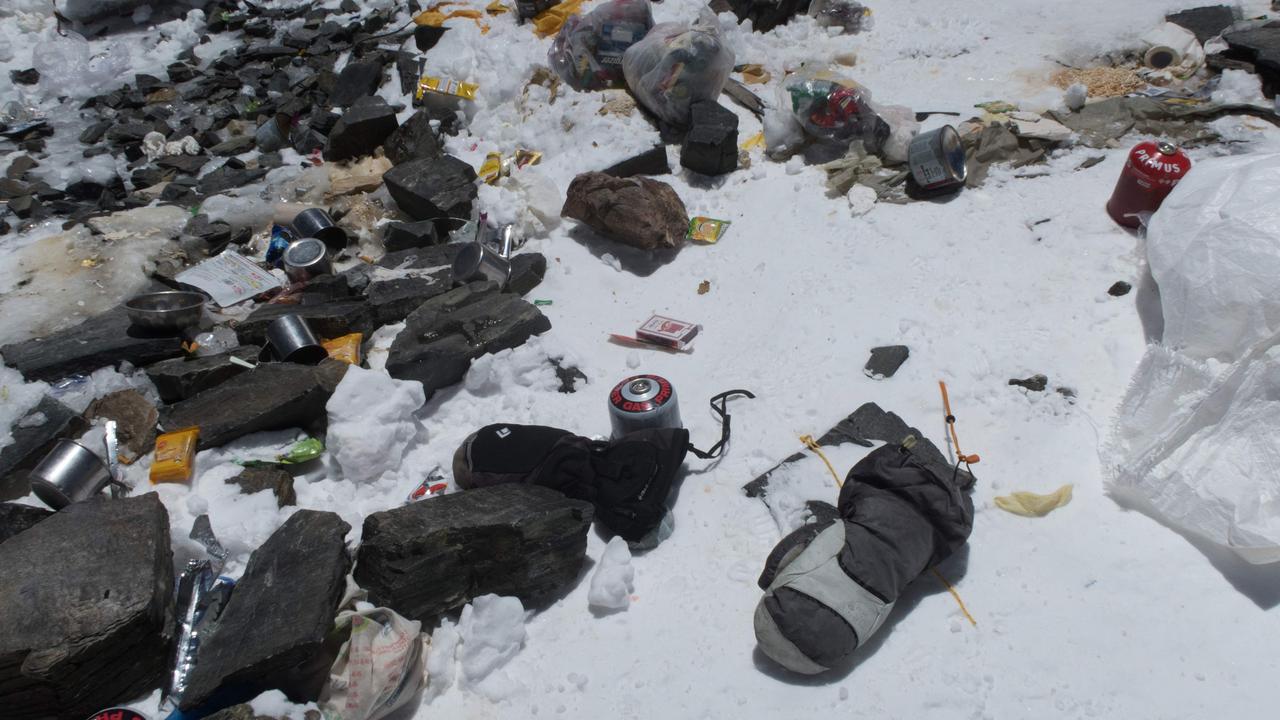Mount Everest’s Hidden Dangers: Latest Discoveries That Have Scientists Stunned

Mount Everest, standing at 8,848 meters above sea level, is not only the highest peak in the world but also a place shrouded in mysteries and challenges. Recent discoveries related to global warming have revealed more than 200 bodies and tons of trash as the snow melts. This has sparked concern about cleanup efforts in the region. Among the bodies, some are well-known, like Tsuang Pala, also known as Green Boots, whose remains serve as stark reminders of the mountain’s dangers. Climbers must often step over frozen bodies, confronting the reality of mortality on their ascent.
One of the most treacherous areas of Everest is the Death Zone, which lies above 8,000 meters. In this zone, the air is thin, and the weather is unpredictable. Climbers face physical and psychological challenges, and any mistake can be fatal. Those who succumb often remain on the mountain, becoming markers for future climbers. Despite these risks, adventurers are drawn to this deadly region, seeking the thrill of conquering the ultimate challenge.
The story of George Mallory and Sandy Irvine adds another layer of intrigue. They attempted to summit Everest in 1924 but vanished just 100 feet from the peak. While their bodies were eventually discovered, the mystery of whether they reached the summit first remains unsolved.
In 1952, a secret Soviet expedition attempted to conquer Everest, but those climbers never returned. In 2017, a rescue team found four unidentified bodies at a high camp, raising questions about their origins and whether they belonged to the ill-fated Soviet team.
Maurice Wilson, a British soldier with no climbing experience, tried to summit Everest in 1932, motivated by faith. Despite reaching 23,000 feet, he met his end due to exhaustion, exemplifying the mountain’s harshness.
Many climbers report supernatural experiences on Everest, claiming encounters with the ghosts of those who have died there. Veteran Sherpa Pemba Dorgi recounted seeing shadowy figures pleading for help, further contributing to the mountain’s haunted reputation.
Mount Everest continues to captivate and terrify, drawing climbers who seek glory despite the inherent dangers. The mix of physical challenges, historical mysteries, and potential supernatural elements keeps Everest an enigmatic and formidable destination.
**Fossils and Plate Tectonics:** Marine fossils on Mount Everest are evidence of plate tectonics, suggesting the area was once submerged underwater. Over 100 million years, tectonic activity raised these oceanic formations to create the Himalayas, not remnants of a flood.
**Jim Davidson’s Survival:** In 2015, geologist Jim Davidson survived a devastating earthquake on Everest, which killed 18 climbers and over 9,000 people in Nepal. Trapped for 11 days, he helped fellow victims despite his injuries. Davidson, then over 50, trained rigorously for a year before successfully summiting Everest in 2016, fulfilling his dream.
 **Sherpa Conflict:** British climber Jonathan Griffiths faced aggression from Sherpas, who protect their mountain’s sacredness. A misunderstanding escalated into a confrontation, leading Griffiths and his team to abandon their summit attempt with help from experienced climbers like Melissa Arnot.
**Sherpa Conflict:** British climber Jonathan Griffiths faced aggression from Sherpas, who protect their mountain’s sacredness. A misunderstanding escalated into a confrontation, leading Griffiths and his team to abandon their summit attempt with help from experienced climbers like Melissa Arnot.
**Strange Sounds:** Climbers on Everest report eerie noises at night, thought to be the mountain “coming alive.” These sounds result from glaciers cracking due to rapid temperature changes, signaling larger climate change issues affecting the region.
**Guardian Angels:** British climbers Dougal Haston and Doug Scott, trapped in the death zone in 1975, felt a warm presence offering comfort. Many climbers have reported similar experiences, suggesting a spiritual guide during extreme conditions.
**Yeti Footprints:** In 1951, Eric Shipton found mysterious large footprints and hair in the Himalayas, sparking speculation about the Yeti. Despite extensive DNA analysis, the hair has not matched known species, adding to the mystery.

**Julius Sturk’s Tragedy:** Renowned mountaineer Julius Sturk, known for his achievements, died in a fall in 2017 while attempting to climb Everest. The exact cause remains unknown.
**Waste Issues:** Everest is plagued by litter and human waste due to thousands of climbers each year, leading to pollution and health risks for those drinking contaminated water.
**Rainbow Valley:** This area, filled with the colors of climbers’ gear, is deceptively beautiful but deadly, as it lies within the death zone where many have perished.
**Wildlife on Everest:** Despite harsh conditions, Everest hosts wildlife like the Himalayan jumping spider, snow leopards, and red pandas, demonstrating resilience in extreme environments.
Overall, Everest symbolizes human determination but also the tragedies associated with its pursuit.









